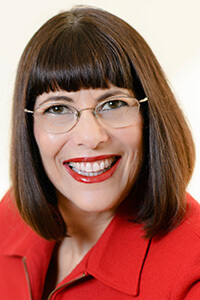True to her craft, speaker coach Hayley Foster has distilled 12 common mistakes speakers make in her book Don’t Tank Your TED Talk. Here are four, excerpted from the short-talk expert’s book:

Hayley Foster
Not Starting Strong
The best TED and TEDx talks don’t follow a specific formula. They are wildly diverse in topic and aim to break the complicated into manageable bite-sized pieces, in a remarkably short time span. There are many approaches to delivery but one thing must happen in every case. Draw the audience’s attention from the beginning. You can show an astounding photo, share something surprising or counterintuitive, or make an engaging comment. A talk about self-help might start with radical self-disclosure. A talk about space exploration might introduce what seems like outrageous facts, which are later proven in the 15 minutes that follow.
Employing Your Usual Methods
A serious mistake professional speakers make is stubbornly sticking to usual methods of talk construction, instead of acknowledging the distinction between a short and a TED-style talk. A short talk refers only to the duration of the talk. Examples include a CEO communicating a vision
to the Board of Directors, and a quick demonstration of a new product being brought to market. TED talks include compelling stories, fascinating research, demonstrations of cool, cutting-edge technologies, innovative art, music, and dance, and a call to action. These talks deliver a unique, new idea, passionately communicated in the TED style.
Please understand that cramming 16 points into a 12-minute talk is the wrong strategy for this genre. Simply shortening the perfect keynote will not make a terrific TED-style talk! While a compelling, content- rich talk is often the goal, to attain it you must set aside what you know, and start with who you are.

Learn more about Hayley Foster and her book at shorttalkexpert.com.
Boring Visuals
The purpose for visuals is to enhance understanding of the core idea, not to keep your place in the presentation. The guideline I give is if you can convey information more efficiently, more interestingly, in a visual, then use it. If it would take you three minutes to explain something a viewer could understand from a chart in 20 seconds, by all means create the chart. Be advised, it has to be a well-constructed, interesting chart!
Visual stimulation tends to override auditory input. When people are looking or reading, it turns down the volume on the talk you are delivering. Take great care with the choice and placement of any visuals to be included.
Being the Star of the Talk
Sounds harsh, I know, but it’s true. The talk is not about you. A key reason that speaking professionals have been unpopular with TED and TEDx organizers is many have egos that may eclipse the core message. Yes, your personality belongs in the mix, but as the catalyst for the message, not as the main attraction. You are there to serve the talk rather than delivering a talk that serves you.

More From the Series
Earn one clock hour of CMP certification by visiting Convene’s CMP Series page to answer questions about this article, those listed below, and the Freeman Trends Report “2024 Attendee Intent and Behavior,” available for download.
- Inside WorldatWork’s Speaker Coaching Program
- 4 Ways to DIY a Speaker Coaching Program
- Attendees Want Less Flash, More Substance
- ‘Programming Stellar Content That Connects With an Audience’
- From Skeptic to Sought-After TEDx Speaker Coach
The Certified Meeting Professional (CMP) is a registered trademark of the Events Industry Council.

